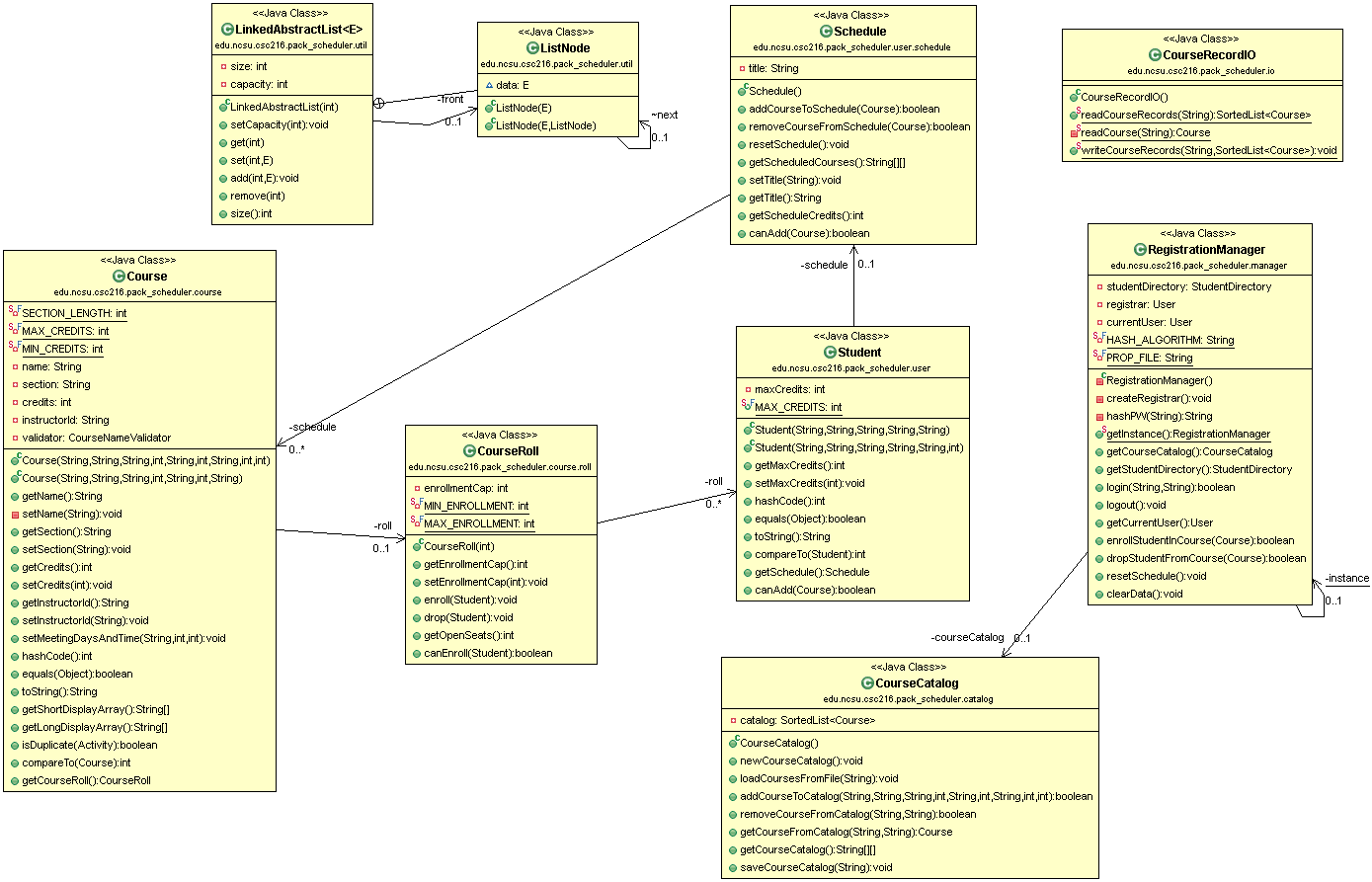CSC 217 Lab 08 Design
The design for Lab 08 is shown below. To follow the development paradigm of additive change, the custom LinkedAbstractList will be implemented in the edu.ncsu.csc216.pack_scheduler.util package. The CourseRoll will be implemented in the edu.ncsu.csc216.pack_scheduler.course.roll package. Course and CourseRecordIO will require some additional work to add the enrollment capacity and CourseRoll object (which is a more invasive change, but needed to maintain a good object design). There are additional minor changes to Schedule, Student, and EnrollmentManager to simplify the logic for adding Students to CourseRolls and adding Courses to Schedules.
Note that the tool used to generate the class diagrams does not include generic return types in the diagrams. If a method is missing a return type, the return type should be E. In this case, LinkedAbstractList.get(int), LinkedAbstractList.remove(int), and LinkedAbstractList.set(int, E) should all return type E.

The figure above is an example of a UML class diagram. Each class is represented by a rectangle; the text in the class describes the class members. Arrows indicate relationships between classes. The software used to generate the diagram in the figure uses the following notation conventions:
- A square (empty or solid) in front of a name means private. Solid squares are operations, empty squares are data.
- A green circle in front of a name means public. Solid circles are operations, empty circles are data.
- Members embellished with S are static.
- Members embellished with SF are static, final. (
Student.MAX_CREDITSis public, static, and final.) - Methods embellished with C are constructors. (See
Student.Student().) - Solid arrows with simple heads indicate has-a relationships, in which one class has a member whose type is another class or interface. The containing class is at the tail of the arrow and the class that is contained is at the head. The arrow is decorated with the name and access of the member in the containing class (- for private, + for public). The arrow is also decorated with the “multiplicity” of the relationship, where 0..1 means there is 1 instance of the member in the containing class and 0..* means there are many, usually indicating a collection such as an array. (
Studenthas a private member namedschedulethat is aSchedule.) - The connector with a circle containing a cross indicates an inner class relationship. The class with the crossed circle is the enclosing class and the other class is the inner class.
The following sections will provide details about how to implement the changes to the design.
The major changes are:
LinkedAbstractList: new classCourseRoll: new classCourse: new field and method; new parameter in the constructorroll:CourseRollobject that is constructed with the newenrollmentCapparameter in theCourseconstructorgetCourseRoll(): returns theCourseRollfor theCourse
CourseRecordIO: updated to handle enrollment capacityCourseCatalog: updated to handle enrollment capacitySchedule: new methodcanAdd()that returns true theCoursecan be added to theScheduleandgetScheduleCredits()that returns the number of credits in the scheduleStudent: new methodcanAdd()that returns true if theCoursecan be added to theStudent’s scheduleEnrollmentManager: three new methods for enrollment, drop, and schedule reset- The GUI classes are also updated and provided later.